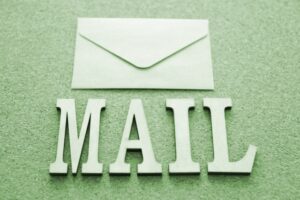In the contemporary business world, email marketing continues to be a powerful tool for engaging and retaining customers. Yet, a mass generic email sent to every single subscriber could be as effective as shooting arrows in the dark. To make your emails resonate with your audience, you need to deliver personalized, targeted content. Enter the strategy of Email List Segmentation.
Segmentation is about dividing your email list into smaller, more focused groups, based on certain criteria, enabling you to send customized emails that speak directly to a recipient’s specific interests, needs, or preferences. Let’s delve into some of the common strategies that can effectively segment your email list.
1. Demographic Information
This is a basic level of segmentation, and it’s often where most businesses start. This includes segmenting your email list based on factors such as age, gender, income level, education, or geographical location. Imagine you’re a retailer selling winter coats. If you segment your list by geography, you can send promotional emails for those coats to subscribers living in colder climates, rather than to those in warmer areas.
2. Purchasing Behavior
Segmenting based on purchasing behavior is another great strategy. For instance, you can categorize subscribers based on their previous purchases, frequency of purchases, average purchase value, or products viewed. If you’re a bookseller, you might send a new science fiction release announcement to subscribers who previously bought or showed interest in that genre.
3. Email Engagement
Categorizing your subscribers by their engagement levels can help you identify who among them are most interested in your content. You could have categories for subscribers who frequently open your emails and click through, those who rarely engage, and those who never do. Tailored re-engagement campaigns can then target the less active or inactive subscribers.
4. Customer Lifecycle Stage
Recognizing where your subscriber is in the customer lifecycle or sales funnel can help you send them relevant emails. A new subscriber may benefit from a warm welcome email, while a regular customer might appreciate exclusive offers or loyalty reward emails.
5. Survey Responses or Preferences
Subscribers’ survey responses or indicated preferences can offer valuable insights for segmentation. For example, if you run a fitness blog and ask your readers what type of content they prefer, you could segment your list based on those who prefer diet tips, workout plans, or motivational stories.
Now that we have seen these strategies, the question is how to implement them effectively. Here are some actionable steps:
Step 1: Identify the criteria for segmentation based on your business type and goals. What do you want to achieve with your email marketing? More sales, more engagement, or maybe customer retention?
Step 2: Collect relevant data about your subscribers. Ensure that the data collection methods comply with privacy and data protection regulations.
Step 3: Implement segmentation based on the identified criteria. Most email marketing platforms have features to help with this.
Step 4: Create personalized email campaigns for each segment. Remember, the goal is to provide value and relevancy.
Step 5: Test, analyze, and refine your segments over time. It’s crucial to monitor the performance of your segmented campaigns and make adjustments as necessary.
In conclusion, segmenting your email list is like serving your subscribers a customized menu instead of a one-size-fits-all meal. When you recognize and respect your subscribers’ individual interests and needs, they are more likely to engage with your content and stay loyal to your brand. Happy segmenting!












